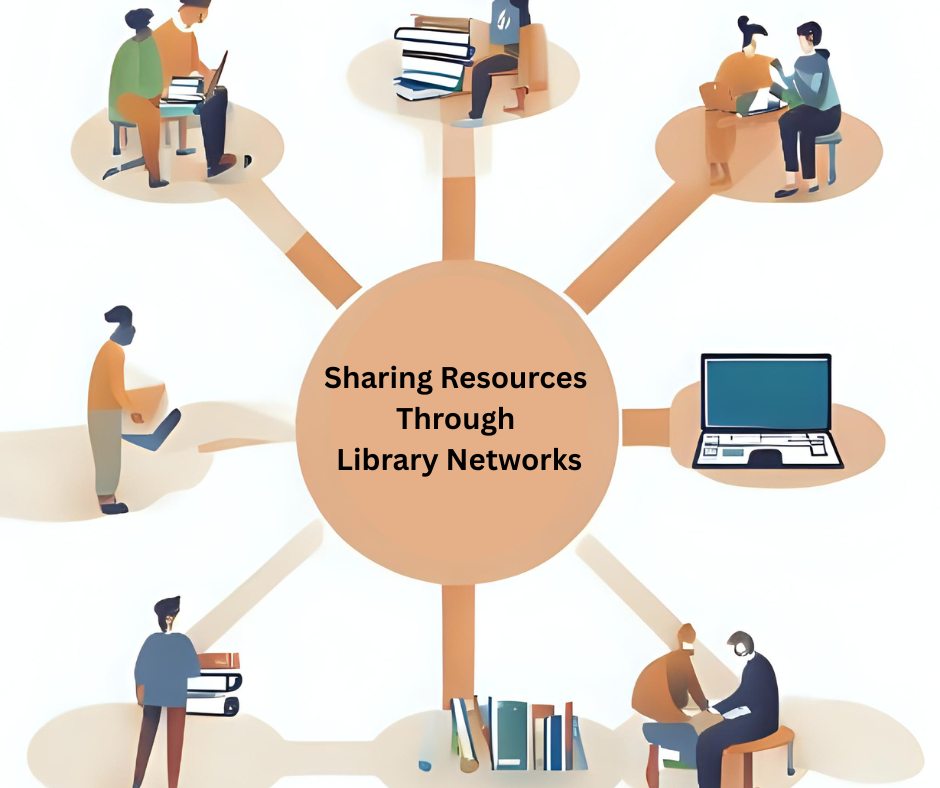The primary objective behind the establishment of diverse library networks is to facilitate the rapid creation and dissemination of information and resources while also promoting the consolidation of library budgets. This effort is centered on ensuring equitable distribution, effective exchange, and collaborative use of resources, ultimately aiming to maximize the availability of documents and services at the lowest possible cost.
In today’s fast-paced information landscape, characterized by an unprecedented rate of resource generation and escalating costs, many libraries are grappling with reduced budgets. This has made the collaborative sharing of resources not just a beneficial option, but an essential strategy for survival. The evolving needs of library users, coupled with the prevailing financial constraints in society, have culminated in a scenario where it is unrealistic for any single library to claim self-sufficiency. Furthermore, no librarian can realistically meet the diverse and growing demands of their patrons single-handedly.

The challenges faced by libraries can be attributed to three main factors:
1. Budget Deficits: Many libraries are working with limited financial resources, making it increasingly difficult to maintain comprehensive collections or keep pace with technological advancements.
2. Information Explosion and Exponential Resource Creation: The relentless expansion of information and the rapid creation of various resources place immense pressure on libraries to acquire and manage a continually growing volume of material.
3. Changing Customer Needs: The expectations and requirements of users are evolving, necessitating libraries to adapt their services and resource offerings promptly.
In response to these issues, libraries are embracing collaborative solutions, seeking to share resources and services through inter-institutional agreements and networked partnerships.
Key Elements for Resource Exchange
Before libraries can effectively share resources and utilize them collaboratively, it is crucial to establish several foundational elements that enable cooperation. These elements facilitate relationship-building among libraries and promote mutual benefits through resource exchange:
1. Resource Collection: Each participating library must maintain a well-organized inventory of its resources. This ensures that, when a library needs to borrow or access resources from another institution, it is also in a position to provide materials in return. A sustainable model for resource sharing cannot rely on one-way exchanges indefinitely.
2. Database Creation: Developing a dedicated database for each library’s holdings is vital. This database may exist as an independent entity or as part of a larger, centralized system, enhancing the accessibility of resources across the network.
3. Joint Catalog Creation: It is imperative for libraries to collaborate in the creation and publication of a joint catalog that lists the journals and other materials acquired by each institution. This catalog serves as a crucial tool for users seeking specific resources within the network.
4. Joint Bibliography: Compiling a shared bibliography is essential for pinpointing the exact location of resources. Such a tool streamlines the process of resource discovery, allowing users to locate and utilize materials more effectively.
5. Online Public Access Catalog (OPAC): OPAC systems are instrumental in providing users with access to a variety of information through online networks. These systems enable patrons to search for and locate resources from multiple libraries in real-time.
6. Internet and Global Networks: The efficacy of collaborative resource sharing has been dramatically enhanced by the advent of the Internet and global networking capabilities. Libraries, regardless of their geographical location, can seamlessly exchange resources and services via online platforms.
The success of shared resource usage hinges on robust computer connectivity and advanced network technologies. These systems facilitate the transmission of data and services across different computers. Various internet-based technologies and services, such as email, File Transfer Protocol (FTP), Telnet, Hypertext Transfer Protocol (HTTP), and the World Wide Web, play a pivotal role in this connectivity. To support these systems, libraries also require appropriate ancillary hardware and software.
Through these collaborative frameworks, libraries not only enhance their service offerings but also work collectively towards addressing the challenges posed by budget constraints, information overload, and evolving user demands.
Barriers to Shared Resource Use
While the advantages of shared resource use in libraries are clear, many institutions face significant obstacles that prevent them from fully benefiting from these opportunities. The primary challenges include:
1. Inadequate Technological Infrastructure: A substantial number of libraries lack the essential computer and telecommunication networks required for effective resource sharing. This technological gap hampers their ability to communicate and collaborate seamlessly with other libraries.
2. Diverse Operational Policies: Libraries operate under a wide array of policies and structures that vary significantly from one institution to another. This lack of standardization can create confusion and inconsistency, making it difficult for libraries to align their efforts and collaborate within the information society.
3. Barriers to Participation: Even when libraries express a desire to engage in resource-sharing initiatives, they often encounter impediments that hinder their participation, whether due to operational limitations or conflicting priorities.
4. Socio-Economic Challenges: The socio-economic status of library users plays a critical role in resource accessibility. Many individuals face financial constraints that limit their ability to benefit from shared resources, which can discourage libraries from pursuing collaborative ventures.
5. Technology Perceptions: Some libraries view the implementation of new technologies as more of a challenge than a solution. This mindset can impede their willingness to adopt innovative tools that would facilitate resource sharing.
6. Security and Trust Issues: Concerns regarding the security of shared resources, including data privacy and potential misuse, remain a significant barrier. Libraries must navigate these complex issues to foster trust among participating institutions.
To unlock the full potential of shared resource use, it is vital that libraries collaboratively address these barriers, enhancing their ability to serve their communities and strengthen their role in the information landscape.



